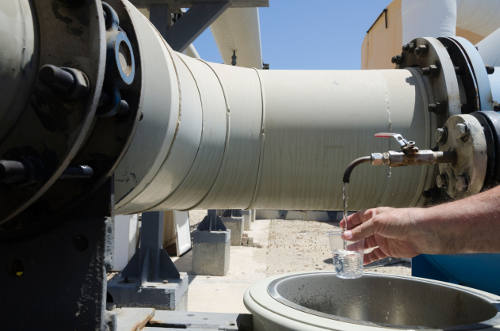Scientists are looking for new ways to desalinate water using energy resources that reduce dependence on dwindling fossil fuels.
 |
| (Courtesy Eitan Simanor / Alamy Stock Photo) |
The Middle East relies heavily on fossil fuels to drive modern desalination technologies that are used to grow food. Currently only 1 percent of desalinated water comes from renewable resources.
Intermittent or low energy supplies are a problem for agricultural settings, where grid networks may not always stretch. Better ways to capture and store renewable energy resources could increase the sustainability of using desalinated water, making it cheaper and easier to use.
Of increasing interest in desalination is geothermal energy, which would provide a constant source of stable ‘base-load’ power for continuous, long-term periods. It could be used directly for membrane distillation, while thermal distillation like MED and MSF could be powered using the electricity it generates.
To date there is no industrial scale geothermal desalination plant, but it is a mature technology that has been used for generating electricity in Italy, Iceland, China, New Zealand and beyond.
“The world is producing about 14,000 MWe of electricity from hydrothermal power only, why not use it in desalination,” says Dornadula Chandrasekharam, geothermist and former chair of the Department of Earth Sciences at the Indian Institute of Technology in Mumbai, India. Now adjunct professor at King Saud University, Chandrasekharam has analysed the opportunities of tapping geothermal systems from Saudi Arabia. The hot springs and radiogenic granites in the west provide huge potential.